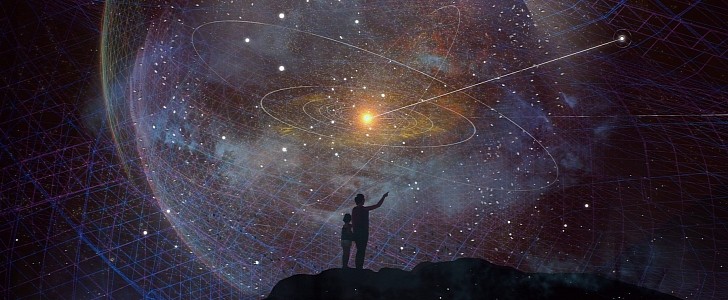In 2018, NASA announced that the Voyager 2 probe had joined the Voyager 1 probe in reaching interstellar space, an area of space outside the solar wind's grasp. This year, on April 17th, the space agency celebrated the New Horizons probe reaching 50 astronomical units (AU) from the Sun, or 50 times the distance between Earth and the Sun. Now, NASA plans to go even further.
NASA and the Johns Hopkins APL are working on the Interstellar Probe, a spacecraft that will fly 1,000 astronomical units (AU) from the Sun to shed some light on how our heliosphere evolved and how it is behaving. To put it into perspective, that's about ten times the distance traveled by the Voyager spacecraft.
"The Interstellar Probe will go to the unknown local interstellar space, where humanity has never reached before," said Elena Provornikova, the Interstellar Probe heliophysics lead from the Johns Hopkins Applied Physics Lab (APL) in Maryland.
"For the first time, we will take a picture of our vast heliosphere from the outside to see what our solar system home looks like.", she added.
The team is planning to observe how the Sun's plasma interacts with interstellar gas to create our heliosphere, what lies beyond our heliosphere, and what the heliosphere looks like. The project also aims to use energetic neutral atoms to capture "images" of the heliosphere and discover more about how our Sun interacts with the local galaxy.
The Sun travels through our galaxy, passing through regions of space. The heliosphere plays a crucial role in protecting our solar system from cosmic rays. Our Sun is now in the Local Interstellar Cloud, but new evidence shows that it is heading toward the cloud's edge, after which it will reach the next space region.
According to Johns Hopkins APL, such a transition could cause our heliosphere to grow bigger or smaller, changing the amount of cosmic rays that add to Earth's background radiation level.
The project will be discussed and analyzed at the European Geosciences Union (EGU) General Assembly which will take place between 19-30th April.
The Interstellar Probe will be the first NASA spacecraft to investigate the origin of deep space and determine if the Sun will enter a new region.
The probe is scheduled to launch in 2030. Compared to the Voyagers that needed 35 years to get to the heliosphere boundary, this spacecraft aims to reach the same place in only 15 years, and it is built to last for at least 50 years.
"The Interstellar Probe will go to the unknown local interstellar space, where humanity has never reached before," said Elena Provornikova, the Interstellar Probe heliophysics lead from the Johns Hopkins Applied Physics Lab (APL) in Maryland.
"For the first time, we will take a picture of our vast heliosphere from the outside to see what our solar system home looks like.", she added.
The team is planning to observe how the Sun's plasma interacts with interstellar gas to create our heliosphere, what lies beyond our heliosphere, and what the heliosphere looks like. The project also aims to use energetic neutral atoms to capture "images" of the heliosphere and discover more about how our Sun interacts with the local galaxy.
The Sun travels through our galaxy, passing through regions of space. The heliosphere plays a crucial role in protecting our solar system from cosmic rays. Our Sun is now in the Local Interstellar Cloud, but new evidence shows that it is heading toward the cloud's edge, after which it will reach the next space region.
According to Johns Hopkins APL, such a transition could cause our heliosphere to grow bigger or smaller, changing the amount of cosmic rays that add to Earth's background radiation level.
The project will be discussed and analyzed at the European Geosciences Union (EGU) General Assembly which will take place between 19-30th April.
The Interstellar Probe will be the first NASA spacecraft to investigate the origin of deep space and determine if the Sun will enter a new region.
The probe is scheduled to launch in 2030. Compared to the Voyagers that needed 35 years to get to the heliosphere boundary, this spacecraft aims to reach the same place in only 15 years, and it is built to last for at least 50 years.

